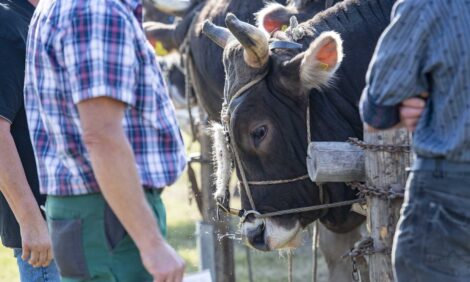



Managing Through a Recession
After several years of favourable hay prices and generous margins, forage producers are facing a 2009 that looks less than rosy, writes Iowa State Extension Economist, William Edwards.Higher inputs costs and selling prices well below the peaks of 2008 will result in fewer dollars left over to pay debt and put into savings. Livestock producers have had to endure many months of thin or negative margins, as well.
Here is a list of possible financial management practices and strategies that could come in handy this year.
Prepare an accurate set of financial statements. Highly variable inventory prices and increasing land values will make this year’s balance sheet look quite different from last year’s. And a net income statement for 2008 may be something for you to share with your lender.
Prepare a detailed cash flow budget. Many hay farmers will have a hard time meeting all their cash commitments from sales in 2009. Higher input costs and rents will increase operating line requirements. Livestock farmers will need to budget feed purchases carefully.
Shop around for inputs. Depending on when suppliers booked fuel, fertiliser, pesticides and other inputs, prices may vary dramatically.
Consider both cost savings and yield effects when applying inputs. For example, cutting back on nitrogen fertiliser when costs are high makes sense, but only up to a point.
Know your costs of production. When profitable selling opportunities arise, lock them in. Watch for opportunities to price crop inputs, feed, and feeder livestock, as well.
Document yields for a possible crop insurance or SURE payment. Additional payments may be available under the SURE disaster program in the new farm bill.
Increase crop insurance coverage for 2009. Higher production costs may require higher levels of protection to assure a breakeven level of revenue. Cattle, and sheep producers can set price floors using Livestock Gross Margin or Livestock Risk Protection insurance programes.
Use flexible lease agreements. Tying cash rents to a formula that takes into account both yields and prices will help protect margins. Land owners can share in high profits when they are available with a flexible lease agreement.
Defer capital purchases. When margins are narrower, replacing machinery or bidding on more land may have to wait. Replacement parts and overhauls are cheaper in the short run.
Defer income taxes. Potential tax bills can be put off until future years through actions such as using expense method and early depreciation, deferring crop insurance payments based on yield losses, prepaying farm expenses, and using income averaging.
Compare financing rates. Federal interest rates are at historic lows. There may be wide differences among agricultural lenders. Marketing loans from the Farm Service Agency are also available for short term financing.
Consider refinancing long-term obligations. Compare possible interest savings to the costs of rewriting the loan. It may be a good time to convert variable rate loans to a fixed rate.
Keep assets liquid. If gross revenue is not enough to cover production costs and family living expenses this year, keep funds in savings or short-term investments rather than assets that would be hard to convert to cash.
Use equity in land, livestock and equipment. If cash reserves aren’t enough, talk to your lender about borrowing against fixed assets, with a multi-year repayment plan.
Agriculture has always been a cyclical industry. A good financial manager learns to balance the profits and losses to ensure long-term survival.
September 2009


